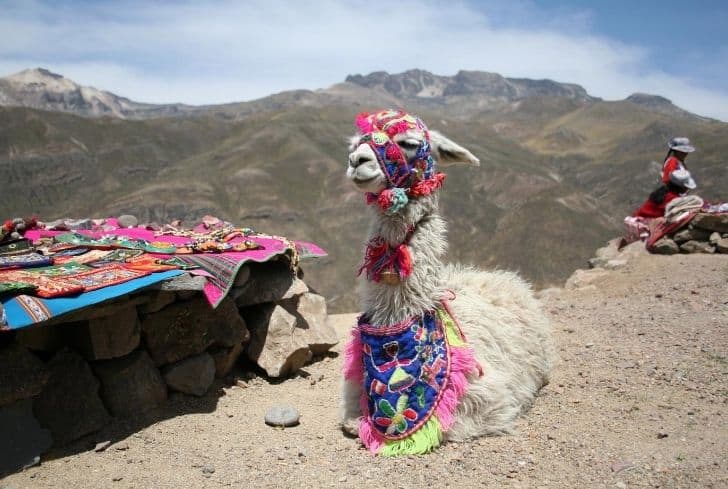Why Do White Rabbits Have Red Eyes? (Albinism)

If you’re looking to adopt a bunny and your interest is piqued by albino breeds, with their beautiful white skin and hypnotic ruby red eyes, you’re in good company. Yes, the unusually charming albino rabbits are docile and certainly did not win the genetic lottery, but many devoted pet parents welcome these cuties into their families.
Before making the adoption official, though, read on to familiarize yourself with albinism in rabbits, what makes them special, and why need them special care.
What Causes Albinism in Rabbits and Why do Albino Rabbits Have Red Eyes?
Albinism is an inherited trait. Albino rabbits have mutations at the C locus of the gene responsible for producing tyrosinase, an enzyme that helps synthesize melanin from amino acid tyrosine. With melanin pigment stripped off from the body, including fur and eyes, albino rabbits will take a bleached look.
Genes for albinism:
Rabbits have 5 types of genes at the C locus. They are,
- C: Allows for normal, uninhibited melanin production. Being the dominant one, it suppresses the expression of four other genes at C locus.
- cch3: Inhibits production of pheomelanin, the yellow to reddish pigment, only.
- cch2: Inhibits pheomelanin as well as reduces eumelanin production.
- cch1: Responsible for temperature-controlled albinism; melanin pigment is only produced where the body temperature is coolest.
- c: No melanin production at all – meaning complete albinism.
A rabbit with a functional tyrosinase gene can have a variety of fur and eye colors. The melanin pigments eumelanin (responsible for dark brown color) and pheomelanin (responsible for other brown hues) are present in rabbit fur and eyes. If the pigments in a rabbit’s eyes are small in diameter and widely dispersed, he/she will take blue eye color; if it’s denser and larger in diameter, the eyes will be brown.
The red eyes in an albino rabbit aren’t because of red pigments; remember, he doesn’t have pigment. Instead, his eyes appear red because the iris reflects light from his blood vessels instead of pigments.
Talking about the red-eye color in albino rabbits, the eyes aren’t actually red or pink in them. Instead, both the iris and tissues surrounding the retina contain very little coloration, and the absence or shortage of melanin in the eye may expose underlying blood vessels. When their iris reflect light from the blood vessels (pigments in the eye reflect light) their eyes appear red.
White (albino) rabbits find bright light somewhat irritating and prefer shady places where their vision is better. That being said, they also have fewer rods (photoreceptors) than non-albino ones, don’t see too well in dim light or utter darkness. This causes the white bunnies to exhibit ‘scanning behavior’, wherein he or she will sway the head from side to side to get a better view of the surroundings.
Note: Rabbits can be pure or partial albinos. Pure albino rabbits usually have pink to reddish eyes, nails, and skin. Partial albino rabbits have some of the coloration typical of their species, but parts of their body appear white.
What Rabbit Breeds are Prone to Albinism?
Rabbit breeds come in all shapes, sizes, and colors. According to ‘Data export: Global Rabbit Breeds by Country’ by FAO (Food and Agricultural Organization of the United Nations), there are 305 domestic rabbit breeds across the world.
Since any animal with melanocytes (melanin-producing cells) can get albinism, virtually all 305 breeds have a chance of producing albino rabbits. However, most of the rabbit breeds have never been observed as albinos, probably due to the suppressed recessive albino gene. That being said, albinism is quite evident and common in some breeds:
1. Himalayan: Also known as Russian Rabbit, the Black Nose Rabbit from China, and the Egyptian Smut, the Himalayan is one of the oldest and rarest rabbit breeds. Weighing just 3-4 pounds, Himalayan rabbits are loved for their calm demeanor.
2. Californian Rabbits: Often mistaken for the Himalayan rabbits, they’re a cross between a Himalayan and a Chinchilla. They are the most energetic and human-friendly rabbit breeds.
3. Florida White: It is the only rabbit breed that will always have red eyes and pure white skin. Earlier they were bred as laboratory animals but now considered as a pet breed.
4. Giant Angora: Giant Angoras are the largest among the four Angora breeds recognized by the American Rabbit Breeders Association. It is also the second-largest breed, after the American Rabbit and an endangered one.
5. Lionhead Rabbits: Introduced in the 90s, this domestic breed is celebrated for its wool mane encircling the head, reminiscing a male lion. Albino lion head rabbits are the perfect companions for children and adults alike.
Does Albinism Place a Rabbit’s Health in Danger?
Besides being all-white with red to pink eyes, albino rabbits are no different from the non-albino ones. They might be seen as an oddity among their peers, but most albino bunnies are healthy and robust. The only consideration, however, is that they may suffer from sunburns and skin cancers more frequently than the non-albinos. Sometimes, they may also be cursed with vision impairments making them easy prey in the wilderness.
As we have seen earlier, albino rabbits have sensitive eyes due to a lack of pigment. Sometimes even normal light might cause the eyes to hurt. If you have an albino rabbit at home, check if he or she is closing eyes frequently or rock head back and forth – both are indications of eye irritation from light.
To make things easier, keep them in a place where there are less light and more space – they would love to move around like a normal rabbit.
Do Red-eyed Rabbits Have Good Eyesight?
Rabbit’s visual system is nearly 360-degree, except directly in front. It helps them quickly and effectively detect predators approaching from almost any direction. Their eyes are high and to the sides of the skull allowing them to see objects far above their head.
Studies show that rabbits, in general, have a limited ability to discriminate between green and blue lights and cannot perceive them as colors. Meaning they have limited color vision, probably conferred by red and green cone cells.
Compared to non-albino rabbits, the albinos with red eyes have vulnerable eyesight. The lack of rod cells causes blurry vision during the day. Since rod cells are entirely responsible for night vision, albino rabbits may have poor night vision. You’ll sometimes notice red-eyed albino bunnies twisting and turning their heads to get a better look at the objects that caught their interest.
Can I Breed an Albino Rabbit?
Yes. Breeding an albino rabbit has no legal or ethical restrictions. The baby rabbit can only be albino In two cases.
Both male and female rabbits are albinos. Because albinism is an autosomal recessive trait.
If both males and females are phenotypically normal (with normal skin and eye color) but are carriers of the recessive allele for albinism. In other words, both parents are heterozygous, with each carrying one dominant and one recessive allele for albinism.
My Rabbit Has Red Eyes but not White Fur. Why so?
Having red eyes alone doesn’t make a rabbit albino. Pure albinos usually have red eyes with no pigment in their skin or fur. Certain albino bunnies also have blue eyes, which is rare.
‘Red eyes with no white fur’ in rabbits can only be related to an eye infection, medically termed as hyperemia. Hyperemia or simply redness in the eyes is caused by an increased amount of blood in conjunctival, episcleral, and ciliary blood vessels.
There are many causes; the major ones are:
- Allergies
- Glaucoma
- Bacterial infections
- Fungal infections
- Conjunctivitis
When teeth are overgrown in rabbits, it will put extra pressure on the ocular socket, thus making the eyes redder. In some cases, the infections are usually accompanied by swelling, teary eyes, or bumps around the eyes.
It is also important to note that not all white rabbits are albinos. Some breeds are naturally white, or they may suffer from leucism (partial loss of pigments).
Why do I Never See Albino Rabbits in the Wild?
Occasionally albino rabbits are born in the wild, but their unique all-white, pale skin makes them an easier target for predators or poachers. A lack of pigmentation can, however, affect their vision, making it hard for them to find food and avoid other dangers.
The albino bunnies that most of us pet at home are from breeding homozygous or heterozygous wild rabbits. They can lead safe and happy lives in our homes. When you decide to adopt an albino bunny, remember that they are special and do need special consideration.
References:
- https://www.researchgate.net/publication/226112795_Tyrosinase_gene_variants_in_different_rabbit_strains
- https://files.dnr.state.mn.us/mcvmagazine/young_naturalists/young-naturalists-article/albino_animals/albino_animals.pdf
- https://www.albinism.org/information-bulletin-what-is-albinism/
- https://www.ncbi.nlm.nih.gov/pmc/articles/PMC1085785/?page=1






